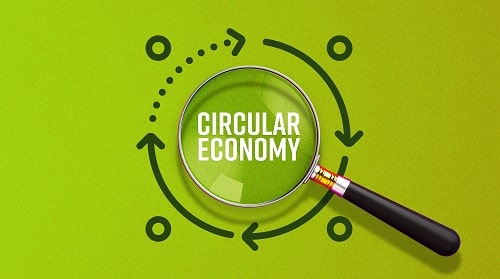Employers often need to call on external providers to carry out and implement fire safety risk assessments, and using providers certificated by a recognised third-party certification body will provide confidence that the company or person has the necessary competence for the work.
Features
Fire safety: the benefits of using certificated providers
Last year, the Home Office published a new document, A guide for persons with duties under fire safety legislation. This guidance supported the requirement to strengthen the understanding of the role of the Responsible Person and the obligations that are linked to this vital fire safety role.
 Photograph: iStock/A Stockphoto
Photograph: iStock/A Stockphoto
The document clearly outlined that “its purpose is to explain the duties in simple, non-legal language”. This has provided much needed information about how fire safety legislation has developed in recent years. There have been three new additions to the Regulatory Reform (Fire Safety) Order 2005 following the Grenfell Tower fire, a tragic event which occurred seven years ago. These new additions were set out in three phases. Phase 1 introduced the Fire Safety Act 2021, Phase 2 the Fire Safety (England) Regulations 2022, and the crucial Phase 3 introduced Section 156 of the Building Safety Act.
In a considerable improvement to the Fire Safety Order, Section 156 of the Building Safety Act introduced clear addendums to fire risk assessment requirements. It stresses that: “The responsible person must not appoint a person to assist them with making or reviewing an assessment under article 9 [Risk Assessment] unless that person is competent.” To build on this, it adds: “A person is to be regarded as competent for the purposes of this article where the person has sufficient training and experience or knowledge and other qualities to enable the person properly to assist in making or reviewing the assessment.”
In March 2023, the Home Office announced that the new fire safety guidance would come into force on 1 October 2023 (in line with Section 156 of the Building Safety Act 2022). In making this announcement, the Home Office stated: “We are not at this stage commencing a requirement for RPs [Responsible Persons] to ensure that anyone they appoint to do a fire risk assessment is competent. We are actively working with the sector to develop a robust roll-out plan.”
BAFE has been strongly involved with the Fire Risk Assessor Competency Verification Project Board (FRA-CVPB), which is joint chaired by the Home Office and the Fire Sector Federation.
All participants on the Board have been engaged in setting out appropriate criteria for any fire risk assessor who provides fire risk assessment services to Responsible Persons in charge of workplaces, public buildings, public sites, accommodation for paying guests and the common parts of multi-occupied residential buildings, such as blocks of flats.
Major development
I report this news as we are getting closer to setting a suitable bar for competency within the fire risk assessment sector. This is a major development in the industry which will affect current and future fire risk assessment providers entering the field. Guidance to help Responsible Persons understand the planned new competency requirements they will need to be aware of when hiring external assessors to conduct fire risk assessments for their premises will be published by the Home Office before the competency requirements come into force. This guidance will also provide suitable information for the fire risk assessment industry itself.
 Ken Bullock is technical schemes and assurance manager at BAFE Fire Safety Register
Ken Bullock is technical schemes and assurance manager at BAFE Fire Safety Register
Section 156 of the Building Safety Act 2022 introduced more stringent fire safety management duties for the Responsible Person. For example, the completed fire risk assessment must now be recorded in full (including all the findings), when previously it was only the “significant findings of the assessment” that had to be recorded. Section 156 of the Building Safety Act 2022 adds that “any such [fire risk] assessment must be reviewed by the Responsible Person regularly so as to keep it up to date”.
In addition, all fire safety management arrangements must now be recorded (to demonstrate how fire safety is being managed in the premises), with the Act noting: “A Responsible Person must keep records of relevant fire safety information.”
The Act explicitly stresses that this record must include the identity of both the Responsible Persons and any persons appointed to assist the RP with their fire risk assessment. This clearly shows how, following Grenfell, the Government is pushing for far greater accountability and evidence from Responsible Persons – and the individuals and organisations RPs engage to undertake/review any or all of the fire risk assessment and help them implement suitable fire safety arrangements – to make it easier for Fire and Rescue Services to properly enforce fire safety legislation.
Liability for the fire risk assessment
An important aspect of the fire risk assessment is highlighted in the guidance document, A guide for persons with duties under fire safety legislation, where it clearly outlines that the RP is liable for ensuring that the fire risk assessment for their building is suitable and sufficient. The guidance states that: “The Responsible Person is liable in law if the fire risk assessment is not suitable and sufficient. It is important, therefore, that you show all due diligence in ensuring that the fire risk assessor is competent.”
 Photograph: iStock/CatLane
Photograph: iStock/CatLane
As the Responsible Person, how would you prove you have acted with “all due diligence” when defending your actions to the enforcing authorities and insurers etc. after engaging a third-party fire risk assessor to carry out your fire risk assessment? BAFE’s advice to Responsible Persons would be engage fire risk assessment organisations and individuals that hold current and valid third-party certification awarded by a UKAS Accredited Certification Body.
However, although this specification can help in sourcing appropriate organisations to enable the RP to meet their legal obligations under fire safety law, BAFE also stresses the importance of verification.
Our ongoing campaign, ‘Don’t Just Specify, Verify’, champions the importance of using fire safety providers who hold appropriate UKAS Accredited Third-Party Certification. For fire risk assessments, for example, RPs should look for an organisation that holds BAFE SP205 (or equivalent) third-party certification. All BAFE Registered Organisations can be found and verified on the BAFE website.
For many years now, the UK Government has strongly recommended the use of Third-Party Certificated organisations to help RPs meet their fire safety obligations. The Government’s Fire Safety in the Workplace guidance documents state that: “Third-Party quality assurance can offer comfort both as a means of satisfying you that goods and services you have purchased are fit for purpose, and as a means of demonstrating that you have complied with the law.”
This guidance is relevant in demonstrating the due diligence a Responsible Person must undertake when engaging third-party organisations and individuals to help them meet their fire safety duties. Fire safety legislation additionally requires that, to the extent that it is appropriate, the premises must be “equipped with appropriate fire-fighting equipment and with fire detectors and alarms”.
The law also states that, where necessary, “emergency routes and exits requiring illumination must be provided with emergency lighting”, and the RP must ensure all the fire safety provisions and equipment provided are “subject to a suitable system of maintenance and are maintained in an efficient state, in efficient working order and in good repair”.
The BAFE Fire Safety Register stresses three key reasons why RPs must specify (and verify) suitable third-party certificated organisations to help them meet their fire safety obligations:
- Acting responsibly – clear specification requirements demonstrate the RP has exercised due diligence. Records of evidencing any claim of third-party certification prior to any work commencing is just as important.
- Confidence in proven competency – UKAS Accredited Third-Party Certification is independent, objective evidence that organisations (and their appropriate employed individuals) are capable of performing specific fire safety work.
- Filter out unregulated contractors/organisations – Specifying appropriate Third-Party Certification is a clear message that the RP takes their fire safety responsibilities seriously.
Although BAFE understands that occupational safety and health professionals may already be aware of the information outlined in this article, we believe it is essential that readers of Safety Management have the awareness and tools at their disposal to easily source and verify appropriately third-party certificated organisations.
Ken Bullock is technical schemes and assurance manager at BAFE Fire Safety Register.
For further information on the BAFE Fire Safety Register and to find/verify BAFE Registered Organisations visit:
FEATURES

How to build circular economy business models
By Chloe Miller, CC Consulting on 07 April 2025
Widespread adoption of a circular economy model by business would ensure greater environmental and economic value is extracted and retained from raw materials and products, while simultaneously reducing carbon emissions, protecting the environment and boosting business efficiency and reputation.

What does the first year on an accelerated net zero path have in store for UK businesses?
By Team Energy on 07 April 2025
The UK is halfway to net zero by 2050 and on a new, sped-up net zero pathway. In light of this, Graham Paul, sales, marketing & client services director at TEAM Energy, speaks to TEAM Energy’s efficiency and carbon reduction experts about the future of energy efficiency and net zero in the UK.

Aligning organisational culture with sustainability: a win, win for the environment and business
By Dr Keith Whitehead, British Safety Council on 04 April 2025
The culture of an organisation is crucial in determining how successfully it implements, integrates and achieves its sustainability and environmental goals and practices. However, there are a number of simple ways of ensuring a positive organisational culture where everyone is fully committed to achieving excellent sustainability performance.



